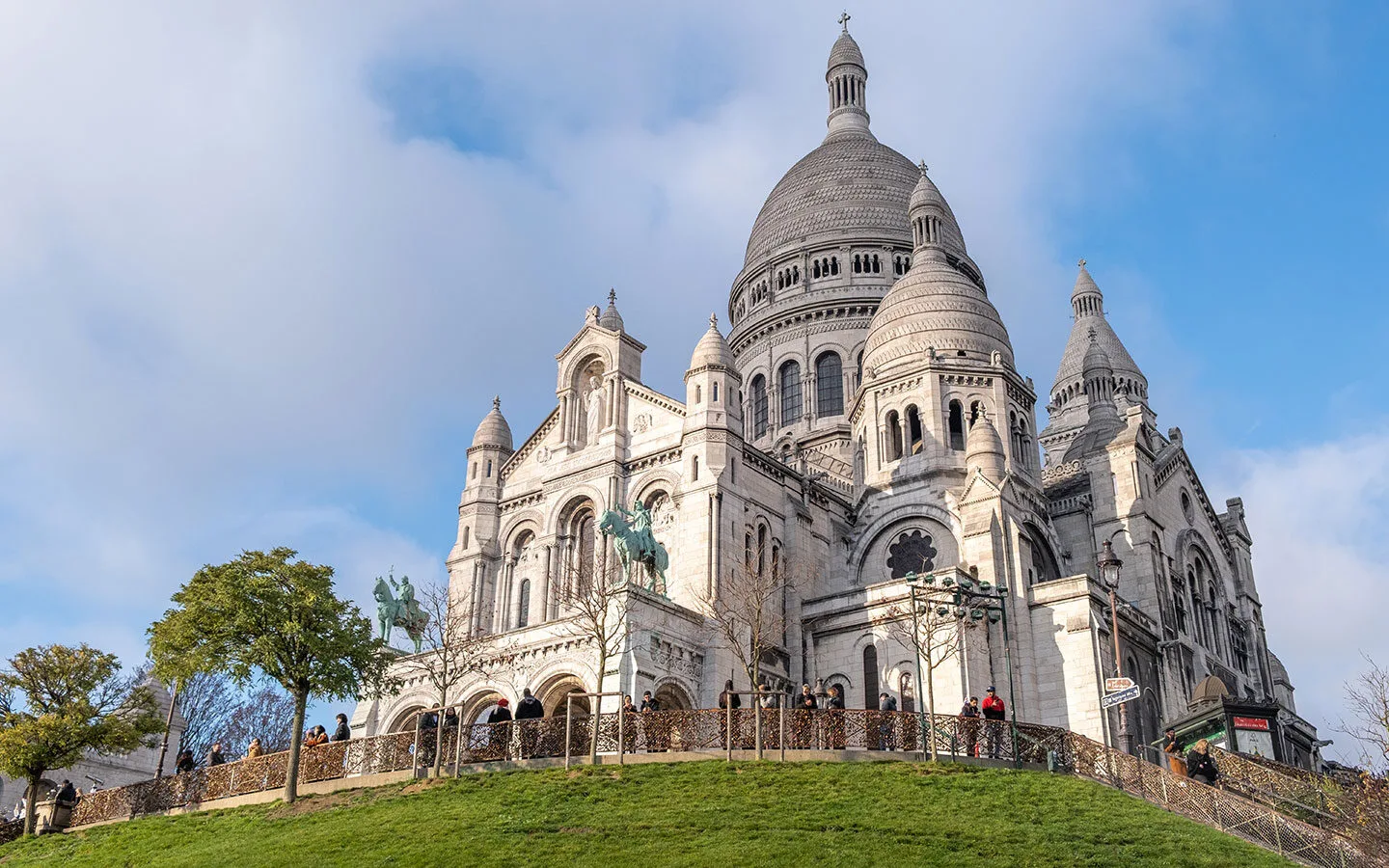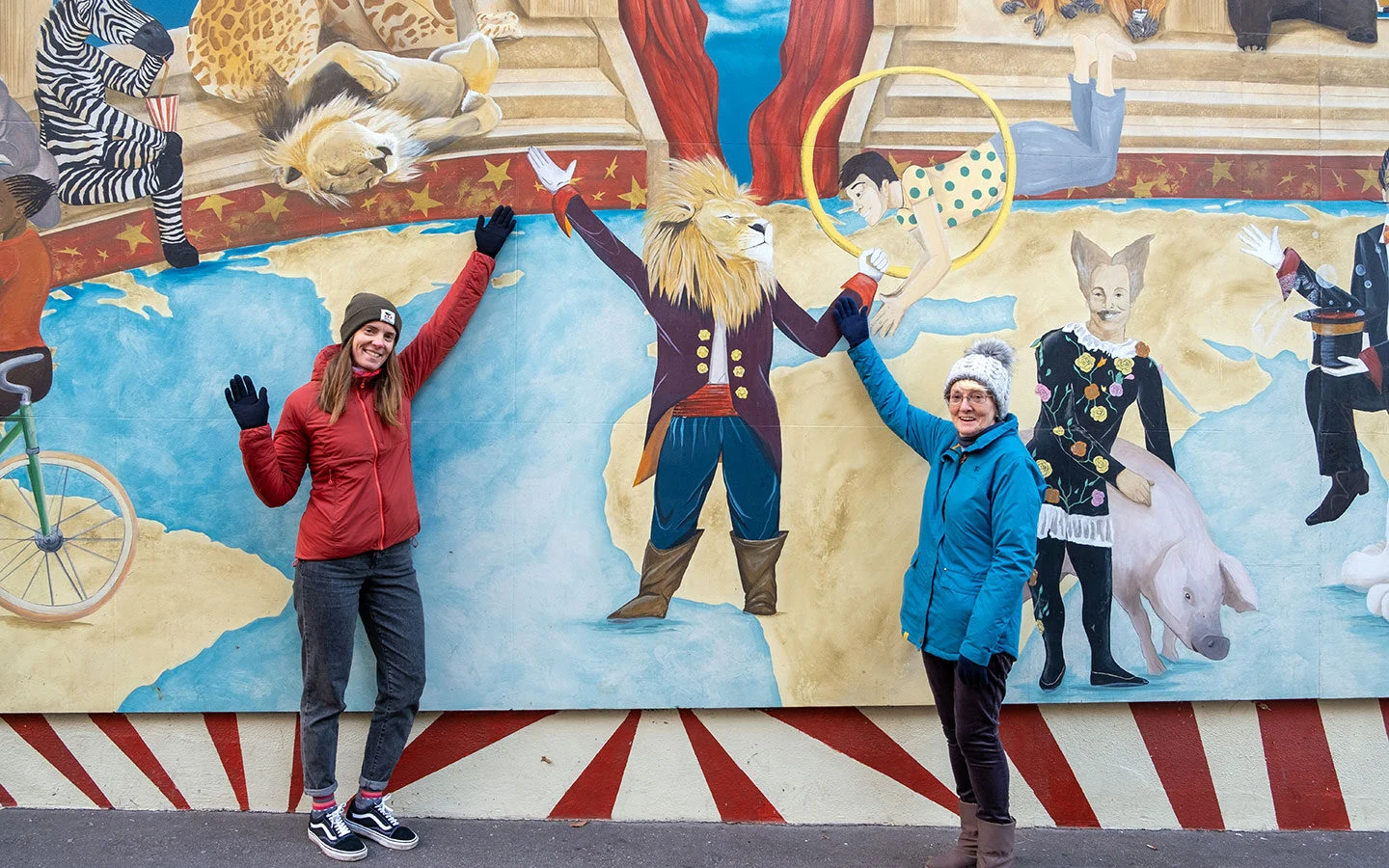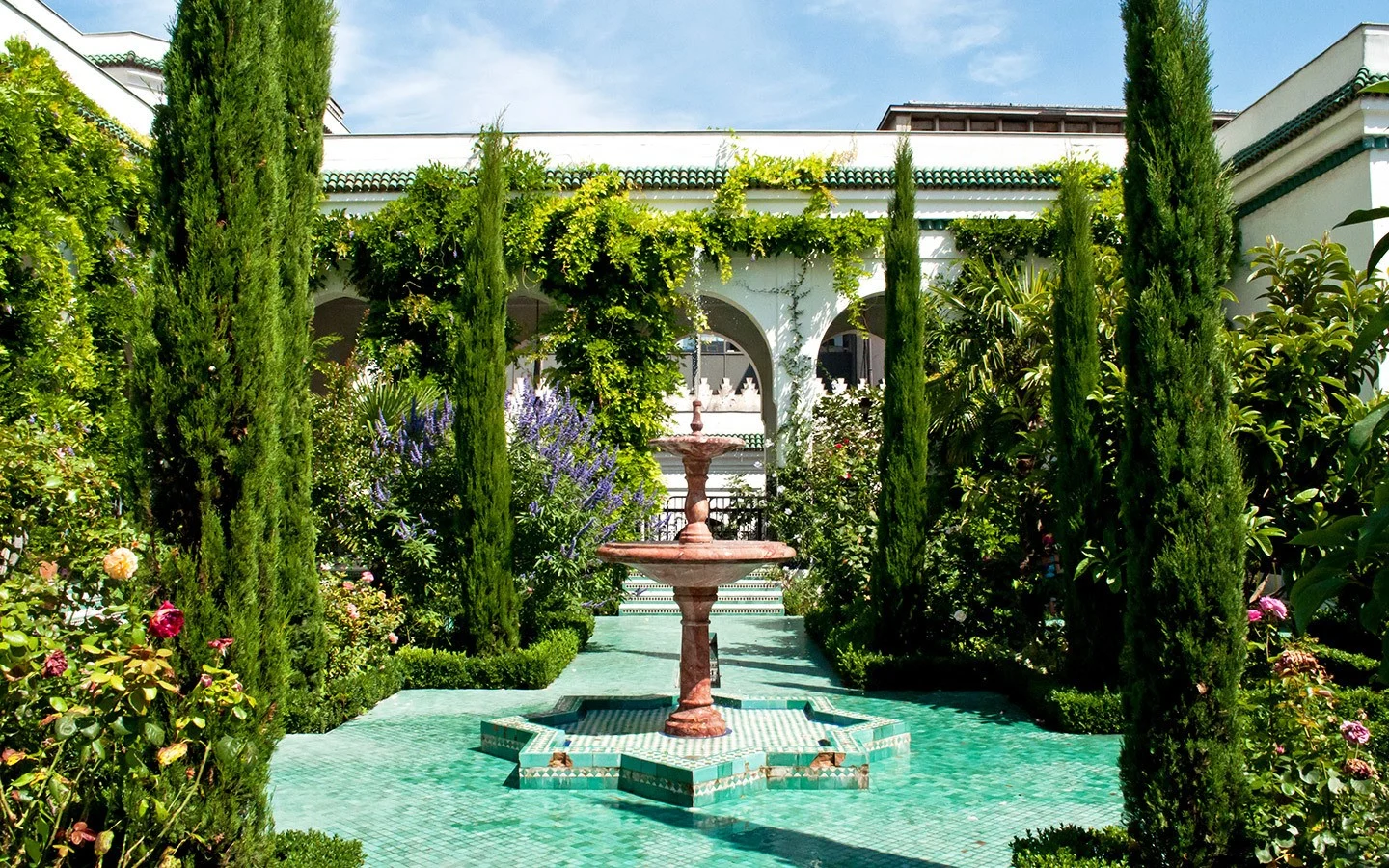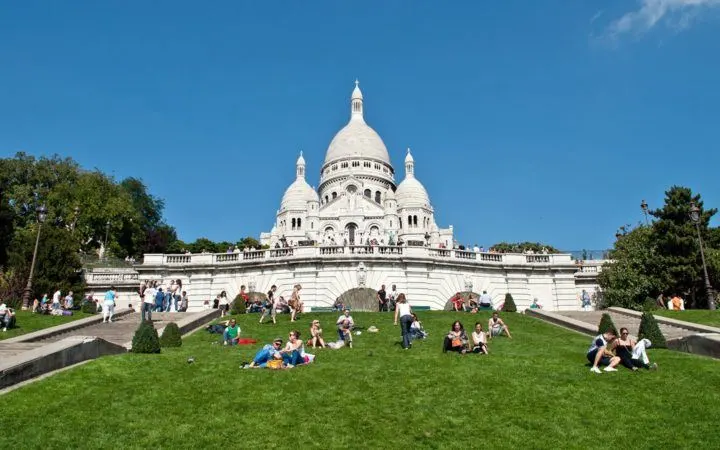Alternative Paris: 10 of the best unusual and alternative things to do in Paris, with new ideas to inspire you when you’ve climbed the Eiffel Tower, visited the Louvre and taken a boat trip on the Seine.
* This site contains affiliate links, where I get a small commission from purchases at no extra cost to you.

Paris is one of the world’s most iconic cities, with a long list of world-famous, must-see buildings and attractions including the Eiffel Tower, Arc de Triomphe, Louvre, Montmartre and Sacré-Cœur Basilica. But what happens when you’ve already seen the big names, what can you do on your second visit to Paris, or your third or fourth visit?
Or what if you’re looking to uncover Paris’ quirkier side? Away from the tourist traps there’s plenty more to discover off the beaten track in the City of Light. So here’s my pick of the best unusual and alternative things do to in Paris for you to try on your next visit.
Alternative things to do in Paris

Climbed the Eiffel Tower? See the views from the Montparnasse Tower
Climbing the Eiffel Tower tops many lists of Paris must-dos. But the problem is that once you reach the top you don’t get a view of the city’s most famous building – because you’re inside it. So why not head up to the top of the Montparnasse Tower* instead?
The Montparnasse Tower is the city centre’s only skyscraper, with its black, boxy outline dominating the Parisian skyline. At 210 metres the tower’s viewing platform is a bit lower than the Eiffel Tower’s upper level at 275 metres. But you get a prime view of the Eiffel Tower (and as a bonus the Montparnasse Tower is hidden from view!).
At the top there’s a glass-walled roof terrace. Or if you don’t want to pay for the viewing platform, you can head to the tower’s Ceil de Paris bar and restaurant on the 56th floor and get a free view with a drink. The best time to visit is around dusk when you can see the lights come on over the city and the Eiffel Tower sparkling on the hour.

Seen the Mona Lisa? Explore the city’s unusual museums
The Louvre* and Musée d’Orsay are Paris’ biggest and busiest museums. But once you’ve seen the Mona Lisa and admired Monet’s waterlilies, there are a whole host of smaller – and in some cases stranger – museums across the city for you to explore.
For science, technology and industrial design there’s the Musée des Arts et Métiers – make sure not to miss the amazing steampunk Métro station underneath the museum too. For anthropology and artefacts from around the world try the Musée du Quai Branly. Or visit the Musée Carnavalet in the Marais to learn about the history of Paris.
If that all sounds too mainstream, Paris also has museums dedicated to fairgrounds (Musée des Arts Forains), the police (Musée de la Préfecture de Police), wine (Musée du Vin) and wax models of body parts (Musée des Moulages). Look out for special exhibitions too, like the Atelier des Lumières with artworks set to music for an immersive experience.

Strolled along the Seine? Cruise the Canal St Martin instead
The Seine is the heart of Paris, and a walk along its banks takes you past some of the city’s most famous sights – though you’ll probably have to dodge people selling fake handbags and flashing Eiffel Towers. For a more low-key waterside experience, head to the Canal St Martin, a 4.5km waterway between the Seine and the Basin de la Villette.
The canal was built in the 19th century to increase water supply into the city, has nine locks and is crossed by elegant wrought iron bridges. Today’s it’s a popular location for ‘bobo’ (bourgeois-bohemian) young Parisians, with trendy cafés, boutiques and bistros.
You can walk or cycle along the canal towpath, which is lined with 100-year-old chestnut trees. Join the locals on the shady banks for a picnic on a summer evening. Or take a boat trip* along the canal – which unusually flows underground for a mile.

Been underground at the catacombs? Tunnel down to the sewers
Not your usual tourist attraction, the creepy tunnels of Paris’ catacombs are stacked with human bones. Six million skeletons were moved underground when the city’s cemeteries ran out of space in the 1780s. And now people queue down the street to visit them.
But the catacombs aren’t Paris’ only underground attraction. You can also get beneath the surface of the city at the Musée des Égouts de Paris – the Sewer Museum – which is located near the Pont de l’Alma bridge. Paris’ sewerage system was built in the 1800s and mirrors the layout of the streets above, right down to its underground road signs.
Once upon a time you could take a sightseeing boat trip along the sewers, but it’s all a bit more hygienic now (and not as smelly as you’d imagine). The exhibition is well worth visiting if you’re interested in engineering, a Les Misérables fan wanting to follow in the footsteps of Jean Valjean, or just looking for a cool spot to escape to on a hot day.

Visited Oscar Wilde’s grave at Père Lachaise? See Rin Tin Tin’s at the dog cemetery
Paris’ cemeteries date back to the 1900s and are more like parks, with lawns, beautifully ornate tombs and statues. The most famous cemetery is Père-Lachaise, where you can leave a lipstick mark on Oscar Wilde’s grave and a cigarette on Jim Morrison’s. But just as beautiful and much quieter are the cemeteries at Montparnasse and Montmartre.
Or for something a bit different, head out to Asnières-sur-Seine on the outskirts of Paris to the Cimetiere des Chiens, or dog cemetery. It opened in 1899 so rich Parisians could pay tribute to their pets, and has a mix of grand, elaborate monuments and simple gravestones marked with poems and tributes to much-loved animal companions.
The cemetery is not just for dogs either, you’ll also find graves for cats, birds, horses, monkeys and even the occasional lion. It has own famous residents, including Hollywood silent film star dog Rin Tin Tin, and is home to a community of living cats too.

Strolled through the Jardin des Tuileries? Take a walk on the Promenade Plantée
Paris’ parks are a great spot for people-watching. But when you’ve strolled through the Jardin des Tuileries and watched boules players in the Luxembourg Gardens, head to the east of Paris where you’ll find the Promenade Plantée – or planted walkway.
Similar to the High Line in New York, this narrow urban park runs above the ground along a former railway line. The Vincennes railway line closed down in 1969 and was scheduled for demolition until it was saved and turned into a public park in 1993.
The Promenade Plantée starts at the Viaduc des Arts, south of Opéra Bastille, where 64 arches beneath the railway tracks have been converted into art and craft studios. It then runs for 1.5 km along the viaduct as far as the Jardin de Reuilly – with bamboo, maple and cherry trees, benches and ponds – before carrying on to the Bois de Vincennes.

Ridden the Metro? Discover the Petite Ceinture
With its 308 stations and 141 miles of track, the Paris Metro makes it easy to get around the city. And some of its stations are attractions in their own right – like Arts et Métiers pictured above, Art Nouveau Cité and Concorde with its wordsearch-style tiles.
But before the Metro was built, a circular railway called the Petite Ceinture (‘little belt’) connected Paris’ main train stations, transporting goods and later passengers. It ran from 1862 until 1934, when the opening of the Metro caused passenger numbers to drop. After it closed, some sections were incorporated into train routes and others abandoned.
Unlike the Promenade Plantée, the Petite Ceinture hasn’t been converted into a park, instead it’s much wilder, with the original tracks and tunnels overgrown with greenery. Not all sections are accessible to the public, but there are spots in several arrondissements where you can access the track (it’s a good idea to bring a torch and wear flat shoes).

Seen the painters in Montmartre? Try a street art tour
Artists have been drawn to Montmartre since the 1880s, with famous names like Van Gogh, Monet and Renoir inspired by the area’s beauty. And you still see artists at work in the Place du Tertre creating Parisian street scenes, portraits, caricatures and silhouettes. Spots in the square are so sought after that there’s a 10-year waiting list for a pitch.
But there’s also a less traditional artistic side to Paris, which you can see in the colourful murals, stencils and graffiti tags dotted around the city streets. Paris’ street art scene has boomed since the 1980s and you can see some of the best examples around Bellville, Montmartre, the Canal Saint-Martin and in the 13th arrondissement.
To learn more about Parisian street art culture and the city’s best-known artists, you can take a guided street art walking tour,* or have a go at creating your own artworks*.

Had tea at Angelina? Drink mint tea at the Grande Mosquée de Paris
Angelina’s tea rooms were founded in 1903 and now have five locations in central Paris. But their original Belle Époque-style Rue du Rivoli store is the classic spot for a cup of Mont-Blanc blend tea. But if you’re looking for alternative things to do in Paris, how about a cup of Moroccan-style mint tea in the gardens of the Grande Mosquée de Paris?
The mosque is one of the biggest in Europe, built in the 1920s as a sign of gratitude to the tirailleurs – 100,000 North African Muslims from the French colonies who died fighting in the First World War – taking design inspiration from Morocco and Tunisia.
Inside there’s a peaceful hidden garden, with trees and flowers surrounded by geometric patterned mosaics, wooden carvings and whitewashed archways. And in the Salon de Thé, gleaming brass tables are set among the fig trees, where waiters pour mint tea from up high in traditional Moroccan style, with sticky honey and nut pastries to go with it.

Heading to the coast? Hit the beach at Paris Plages
Summer in Paris can be hot and busy, so it’s no surprise that many Parisians leave the city in August and head to the coast instead. And it can be tempting to join them and swap the busy streets and crowded museums for sand and sea when the sun is shining.
But you don’t have to choose between the city and the beach, as the annual Paris Plages event has been bringing a taste of the French Riviera to Paris in summer since 2002. For two months each year (normally early July–early September), the banks of the Seine and Bassin de la Villette are transformed into a seaside resort, complete with real sand.
You can relax in a deckchair next to palm trees, cool off under fountains and water sprinklers, or swim, kayak and paddleboard in the Bassin de la Villette. There are lots of free cultural and sporting events, exhibitions and family-friendly activities.

Save for later





